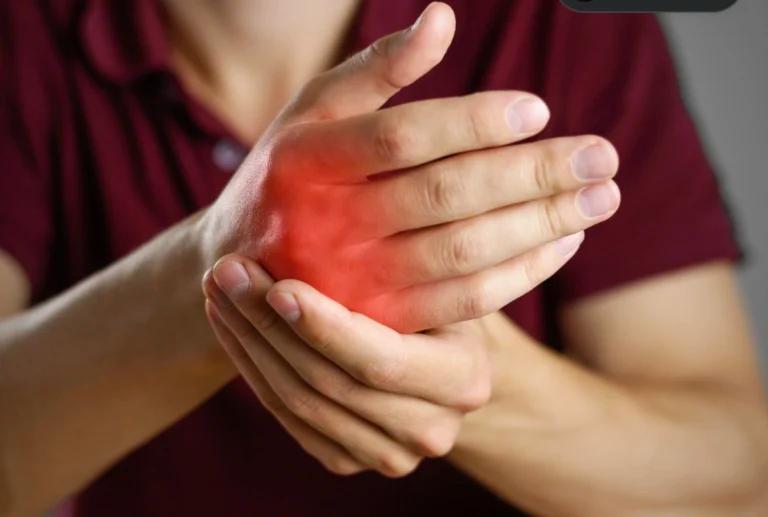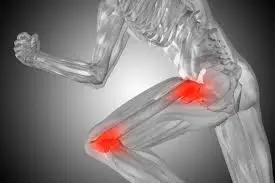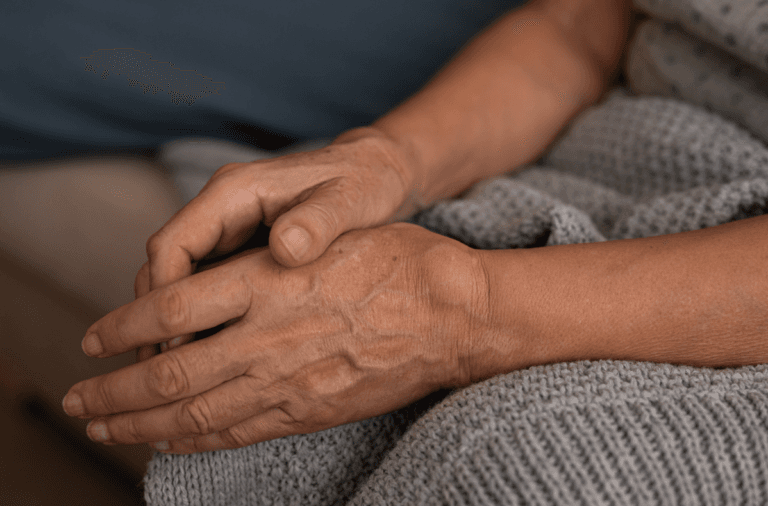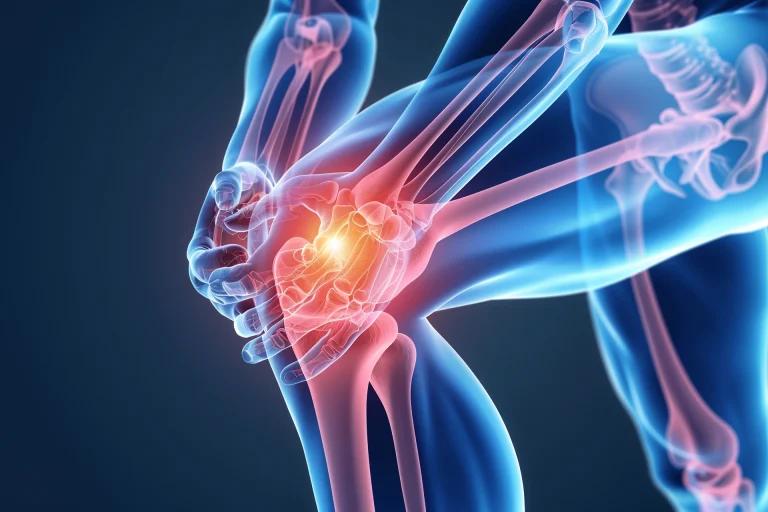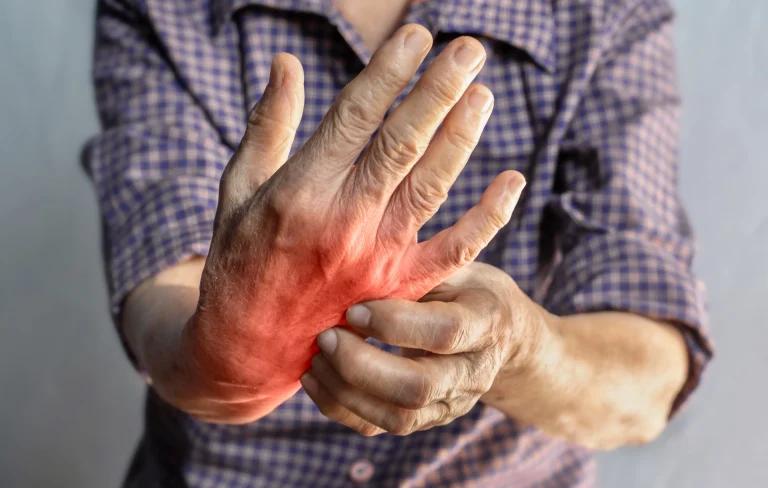There are more than 100 types of arthritis. The two most common types are osteoarthritis and rheumatoid arthritis. Living with arthritis can be difficult, but there are lifestyle changes that you can make to help keep your joints healthy and prevent further damage. In this blog post, we’ll explore ways to maintain a healthy weight, stay active, eat a healthy diet, reduce stress and protect your joints to help you live a more comfortable life. Let’s get started!
Maintain a healthy weight
Maintaining a healthy weight is crucial in preventing arthritis and keeping your joints healthy. Extra weight puts added pressure on your joints, which can lead to wear and tear over time. However, making small lifestyle changes like increasing physical activity or biking instead of driving can help with weight management.
In addition to reducing joint stress through weight loss, other health benefits from regular activity include keeping joints lubricated and improving muscle strength. By taking steps towards maintaining a healthy weight, you can improve overall joint health and prevent future problems associated with arthritis pain.
How excess weight affects joints
Carrying excess body weight can have a significant impact on your joints, leading to increased pressure and accelerated wear and tear of the cartilage. This can result in inflammation that leads to pain and stiffness, making it challenging to engage in physical activity. Cycling is an excellent low-impact exercise option for those with joint issues. Managing your weight through lifestyle changes is crucial for preventing arthritis.
Carrying excess weight can accelerate wear and tear of cartilage, leading to joint inflammation, pain and stiffness. Cycling is a great low-impact exercise option for those with joint issues. Effective weight management through lifestyle changes is crucial for preventing arthritis.
To reduce the effects of excess weight on your joints, implementing tips for effective weight management such as eating a balanced diet, staying active, and avoiding prolonged sitting or standing can make all the difference. By following these simple changes consistently over time, you may experience improved joint health overall.
Tips for weight management
Regular exercise is crucial for weight management and joint health. Low-impact activities like swimming or cycling can help reduce the strain on your joints. A balanced diet that includes plenty of fruits, vegetables, lean protein, and whole grains will provide your body with the nutrients it needs to stay healthy. Additionally, portion control and mindful eating habits can prevent overeating and promote a healthier weight.
Stay active
A safe, well-rounded exercise program can help keep your joints healthy. If you have arthritis, it is important to find exercises that are safe and won’t cause further damage or pain. Always consult your healthcare provider to determine which exercises are right for you and your particular condition. Low-impact activities like walking, swimming or yoga can be great options for keeping your joints active without putting too much strain on them. Aim for at least 30 minutes of physical activity every day to strengthen the muscles around your joints and improve flexibility.
When exercising with arthritis, it’s important to go slow and listen to your body. Start with a warm-up before any activity and gradually increase intensity as you feel comfortable. Don’t push yourself too hard, take breaks when needed and avoid activities that put stress on the affected joint(s). With regular exercise, you may notice less pain in your joints over time while also improving overall health and well-being.
Benefits of exercise for joint health
Regular exercise can bring significant benefits to overall joint health. It can help reduce joint stiffness and pain, improve flexibility and range of motion, as well as develop stronger muscles to support the joints. Exercise helps lubricate the joints by increasing blood flow to the surrounding tissues while also reducing inflammation.
Incorporating exercises that target specific muscle groups around your joints is essential for maintaining healthy bones. Low-impact activities like swimming, cycling or yoga are beneficial because they put less pressure on your joints compared to high-intensity workouts. Strength training exercises like weightlifting increase bone density, making them stronger and more resilient against arthritis-causing damage in later life.
Tips for safe exercise with arthritis
Starting an exercise routine can be intimidating, especially if you are living with arthritis. However, it is important to remember that regular exercise can improve joint health and decrease pain. To start safely, begin with low-impact exercises such as swimming or cycling and gradually increase the intensity and duration over time. This will allow your body to adjust without causing additional strain or joint injuries.
In addition to starting slowly, using proper form during exercise can help prevent injury. If you are unsure about how to perform a certain movement correctly, consult a physical therapist or certified trainer for guidance. By taking these precautions and making gradual progressions in your routine, you can enjoy the benefits of regular exercise while keeping your joints healthy and safe from harm.
Eat a healthy diet
Taking care of your body is essential to preventing arthritis and keeping your joints healthy. Eating a balanced, anti-inflammatory diet that includes plenty of fruits, vegetables, whole grains and lean proteins can help reduce inflammation in the body, which is a leading cause of joint pain. Incorporating omega-3 fatty acids found in fish, olive oil and nuts also is beneficial for joint health. Eat a lot of fresh fruits and vegetables, which contain antioxidants that repair damage and slow down the effects of ageing.
On the other hand, it’s important to avoid processed foods high in saturated fats and sugar as they can lead to weight gain and increase inflammation levels. Limiting alcohol intake can also have a positive impact on reducing inflammation overall. By making small dietary changes like these, you are taking steps towards maintaining healthy joints throughout your life.
Foods to include in your diet
Including certain foods in your diet can help prevent arthritis and keep your joints healthy. Leafy greens like spinach and kale are rich in vitamins C and K, which are important for bone health. Fatty fish such as salmon, sardines, and tuna contain omega-3 fatty acids that reduce inflammation in the body. Nuts and seeds like almonds, chia seeds, and flaxseeds also have omega-3s that can be beneficial for joint health. Many sources suggest that a Mediterranean diet is a good choice for keeping inflammation under control.
Other foods to include in your diet to promote joint health include:
- Whole grains
- Berries
- Garlic
- Ginger
By incorporating these foods into your meals regularly, you can support healthy joints, while enjoying a balanced diet full of wholesome ingredients.
Foods to avoid
Avoiding certain foods can help you prevent arthritis and keep your joints healthy. Processed foods with high levels of sugar or salt should be avoided as they can lead to inflammation in the body. Red meat contains saturated fats that can also increase inflammation in the joints, so it’s best to limit your consumption.
Sugary drinks like soda, juice cocktails, or sweet tea are also problematic for joint health. These beverages contain a lot of added sugars that can cause inflammation and contribute to obesity, which is a risk factor for arthritis. Instead, opt for water or unsweetened tea as much as possible to keep your body hydrated without extra calories or additives.
Reduce stress
Stress can have a significant impact on arthritis symptoms and pain. It’s important to find ways to manage stress to reduce the overall burden on your joints. One effective method is practising mindfulness meditation, which involves focusing your attention on the present moment without judgment. Additionally, participating in low-impact exercises such as yoga or swimming can also help alleviate stress while promoting joint health.
Another way to reduce stress and prevent arthritis is through proper time management techniques. This includes planning, prioritising tasks, and learning how to say no when necessary. By taking control of your schedule, you will be able to reduce feelings of being overwhelmed and anxiety, that can contribute to increased pain levels associated with arthritis. Remember that small lifestyle changes over time can make a big difference in keeping your joints healthy for years to come!
How stress affects arthritis
Stress can have a significant impact on arthritis, making symptoms worse and causing more pain. The following factors outline how stress affects arthritis:
- Stress can increase inflammation in the body, exacerbating joint pain
- Stress can lead to muscle tension and spasms around joints, increasing discomfort
- Stress also weakens the immune system, which may make it harder for your body to fight off inflammatory conditions like arthritis
To reduce stress levels and improve joint health, try incorporating these tips into your daily routine:
- Practice deep breathing exercises or meditation to help calm your mind
- Get regular exercise to release endorphins that boost mood and relieve stress
- Establish a sleep schedule that allows you to get enough rest each night
By taking steps towards reducing stress levels, patients with arthritis may experience less pain while improving their overall well-being.
Tips for stress reduction
Stress can significantly impact the severity of arthritis symptoms. Therefore, it’s important to develop coping mechanisms that reduce stress levels. One effective way to achieve this is through mindfulness practices such as meditation or yoga. These simple and accessible techniques can help you relax, focus on the present moment and reduce anxiety.
Another valuable tip for managing stress levels is to prioritize self-care activities such as regular exercise, getting enough sleep and maintaining a healthy diet. Engaging in enjoyable hobbies or spending time with loved ones are also beneficial ways to unwind after a long day. By taking care of yourself both physically and mentally, you’ll be better equipped to handle the challenges that arthritis may bring.
Protect your joints
Taking care of your joints is essential to prevent arthritis. One way to protect your joints is by practising proper body mechanics. This means maintaining good posture, avoiding repetitive movements, and lifting heavy objects correctly. By using the right techniques, you can reduce the strain on your joints and prevent unnecessary wear and tear.
In addition to proper body mechanics, some tools and devices can help with joint protection. For example, wearing supportive shoes or braces can provide cushioning for your feet or knees while reducing stress in those areas during physical activity. Using ergonomic keyboards or mouse pads can also alleviate stress on hands and wrists when typing for long hours at a computer. These small changes in lifestyle habits can make a big difference in keeping your joints healthy over time.
Proper body mechanics
Maintaining a good posture while sitting, standing and walking is crucial for preventing arthritis. Poor posture can put unnecessary stress on your joints leading to inflammation and pain. Avoid repetitive motions that put pressure on the same joints repeatedly as this can also cause wear and tear over time. Instead, try to switch up your movements regularly.
When it comes to heavy lifting or carrying, use your stronger joints instead of straining weaker ones. This means using a backpack with two straps rather than one shoulder strap or using a dolly when moving heavy objects instead of carrying them by hand. By implementing these simple changes in your everyday routine, you can alleviate pressure on vulnerable areas and reduce the risk of joint damage over time.
Tools and devices to help with joint protection
When dealing with joint pain, it’s important to take steps to protect your joints from further damage. Some several tools and devices can help you do just that:
- Use canes or crutches to reduce weight-bearing on affected joints
- Wear proper footwear with good arch support and cushioning for shock absorption
- Consider using braces or splints during activities that strain the joint
These simple adjustments can make a significant difference in reducing pain and preventing further damage. By taking care of your joints now, you’ll be able to enjoy a better quality of life for years to come.
Sources
- Living with arthritis – NHS
- What is the evidence for a role for diet and nutrition in osteoarthritis? – NIH
- Slowing Osteoarthritis Progression – Arthritis Foundation
Medical Disclaimer
NowPatient has taken all reasonable steps to ensure that all material is factually accurate, complete, and current. However, the knowledge and experience of a qualified healthcare professional should always be sought after instead of using the information on this page. Before taking any drug, you should always speak to your doctor or another qualified healthcare provider.
The information provided here about medications is subject to change and is not meant to include all uses, precautions, warnings, directions, drug interactions, allergic reactions, or negative effects. The absence of warnings or other information for a particular medication does not imply that the medication or medication combination is appropriate for all patients or for all possible purposes.





